Round-to-Linear Fiber Optic Bundles
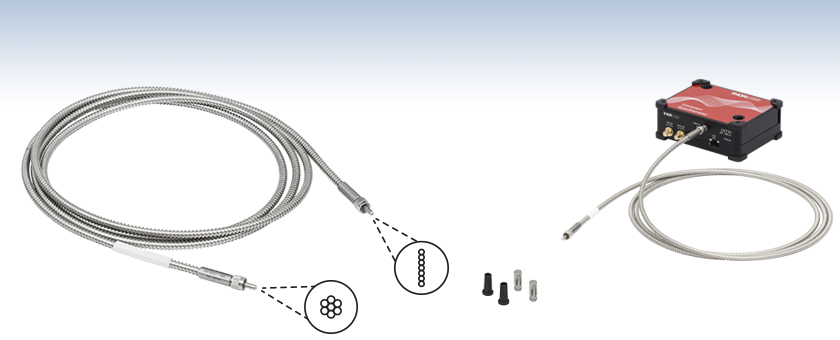
- Solarization-Resistant, Low-OH, or High-OH Fiber Bundles
- One Linear and One Round Bundle End
- Optimized for Use with Spectrometers with an Entrance Slit
Application Idea
Round-to-Linear Bundle Connected
to a CCT10 Spectrometer
SMA Connector with
Linear Bundle
SMA Connector with
Round Bundle
BFL200HS02
Black Rubber and Metal Threaded
Dust Caps Included

Please Wait
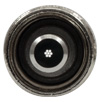
Click to Enlarge
Figure 1.2 Round Bundle End
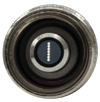
Click to Enlarge
Figure 1.1 Linear Bundle End
Features
- One Linear and One Round End
- Solarization-Resistant, High-OH, or Low-OH Versions
- Ø105 µm or Ø200 µm Core Multimode Fiber
- 2 m Long Cables with SMA905 Connectors
- No Dark (Broken) Fibers
- Linear End Matches the Entrance Slit of a Spectrometer for Higher Signal Levels
- Linear End can Generate a Line Illumination Pattern
These fiber bundles contain 7 fibers arranged in a line configuration (linear) at one end and a circular configuration (round) at the other end. Round-to-linear fiber bundle cables are commonly used to increase the coupling efficiency into spectrometers and other optical devices that have an entrance slit. The linear end matches the shape of the entrance slit better than a single fiber or round bundle configuration and therefore increases the amount of light entering the device (see the Bundles vs Cables tab for more information). The linear end can also be used as a line source of light.
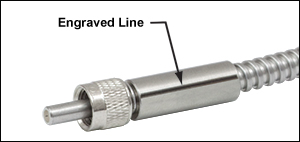
Click for Details
Figure 1.4 An Engraved Mark on the Connector's Strain Relief Sleeve Indicates the Axis of the Linear Fiber Array

Click to Enlarge
Figure 1.3 End Face of a BFL105HS02 Fiber Bundle Behind the 20 µm x 2 mm Entrance Slit of a Spectrometer
These round-to-linear fiber bundles use SMA905 connectors for compatibility with most spectrometers, including Thorlabs' CMOS Spectrometers. The bundles are available with either solarization-resistant, high-OH, or low-OH fibers (OH) content. The 0.22 NA Solarization-Resistant Multimode Fibers exhibit enhanced performance and transmission from the UV to the NIR (180 - 1200 nm), while the 0.22 NA Silica Core, Glass-Clad Multimode Fibers exhibit impressive performance and transmission from the UV to the NIR (250 to 1200 nm for High OH) or the visible to NIR (400 to 2400 nm for Low OH).
For increased durability, these cables incorporate stainless steel protective tubing (Item # FT05SS).
When plugging the linear end of the bundle cable into the spectrometer or another device, the fiber array must be aligned with the entrance slit. For ease of alignment, the fiber array's axis is indicated by a line on the connector sleeve, as shown in Figure 1.4. Precise alignment of the bundle and slit is not critical, but misalignment of more than ±5° can cause a reduction in signal strength. In order to maximize signal intensity, we recommend rotating the bundle while monitoring light levels in the spectrometer; once optimized, tighten down the threaded portion of the SMA connector to lock the bundle in place. When using these bundles with our CMOS Spectrometers, the fiber array should be oriented vertically.
Each patch cable includes two rubber and two metal protective caps that shield the connector ends from dust and other hazards. Additional CAPM Rubber Fiber Caps and CAPSM Metal-Threaded Fiber Caps for SMA-terminated ends are also offered separately.
Please note that the fibers are not mapped between the two connector ends.
| Bundles Selection Guide | |||||||||
|---|---|---|---|---|---|---|---|---|---|
| Straight | Bifurcated | Fan-Out | |||||||
 |
 |
 |
 |
 |
 |
 |
 |
 |
 |
| Round | Linear to Linear |
Round to Linear |
Standard 2-Fiber Y-Bundle Optogenetics 2-Fiber Y-Bundle |
19-Fiber Y-Bundle |
Reflection Probes |
Reflection Probes with Reference Leg |
Transmission Dip Probes |
1-to-4 | Standard 1-to-7 Optogenetics 1-to-7 |
| All Fiber Patch Cables | |||||||||
| Item # | BFL105RS2 | BFL105HS02 | BFL105LS02 | BFL200RS2 | BFL200HS02 | BFL200LS02 |
|---|---|---|---|---|---|---|
| Number of Fibers | 7 | |||||
| Fiber Core Size | Ø105 µm | Ø200 µm | ||||
| Wavelength Range | 180 - 1200 nm | 250 - 1200 nm | 400 - 2400 nm | 180 - 1200 nm | 250 - 1200 nm | 400 - 2400 nm |
| Linear End Fiber Dimensions |
0.9 mm x 0.1 mm | 0.90 mm x 0.13 mm | 1.6 mm x 0.2 mm | 1.55 mm x 0.23 mm | ||
| Round End Effective Core Diameter |
400 µm | 380 µm | 700 µm | 670 µm | ||
| Fiber NA | 0.22 ± 0.02a | |||||
| Solarization Resistant |
Yes | Nob | No | Yes | Nob | No |
| Hydroxyl Ion Content | - | High OH | Low OH | - | High OH | Low OH |
| Fiber Attenuation Plot | ||||||
| Length | 2 +0.075/-0 m | |||||
| Connectors | SMA905 | |||||
| Center Root-Mean-Square-Deviation (Click for Details)c | 1.67 µm | 1.09 µm | ||||
| Center-to-Center Distance (Click for Details)d | 125.38 µm ± 0.14 µm | 220.00 µm ± 0.06 µm | ||||
Linear Fiber Bundles vs. Single-Fiber Patch Cables
Entrance Slit Throughput Comparison
Our linear fiber bundles (sold below) can be used in place of the single-fiber patch cables included with these spectrometers to provide a significant increase in signal strength. Figures 2.1, 2.2, 2.4, and 2.5 show how light exiting a linear fiber bundle more closely matches the geometry of the spectrometer's entrance slit than that from a standard patch cable. The accompanying graphs show comparison spectra of an SLS201L broadband light source measured with a CCT10 spectrometer when using a linear bundle versus a standard patch cable. As shown in Figures 2.3 and 2.6, the Ø105 µm core linear bundles provide a maximum power increase of ~50% versus a comparable single-fiber cable, while the Ø200 µm core linear bundles provide a maximum power increase of ~70%.
Note that, if a replacement or alternative patch cable or fiber bundle is used with the spectrometer, Thorlabs recommends factory recalibration using the new cable to update the amplitude correction.
Ø105 µm Core Cable Comparison

Click to Enlarge
Figure 2.1 7 Fiber Bundle
Light exiting the end face of a BFL105LS02 linear bundle placed behind the 20 µm x 1 mm entrance slit of the spectrometer.

Click to Enlarge
Figure 2.2 Single-Fiber Cable
Light exiting the end face of an M111L02 fiber patch cable placed behind the 20 µm x 1 mm entrance slit of the spectrometer.
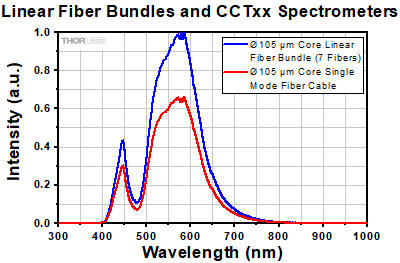
Click to Enlarge
Figure 2.3 Comparison of the spectra of an SLS201L broadband light source obtained with a CCT10 spectrometer when using the BFL105LS02 linear fiber bundle versus an M111L02 single-fiber patch cable. The linear bundle provides a ~50% increase in maximum signal strength.
Ø200 µm Core Cable Comparison

Click to Enlarge
Figure 2.4 7 Fiber Bundle
Light exiting the end face of a BFL200LS02 linear bundle placed behind the 20 µm x 1 mm entrance slit of the spectrometer.

Click to Enlarge
Figure 2.5 Single-Fiber Cable
Light exiting the end face of an FG200UCC fiber patch cable placed behind the 20 µm x 1 mm entrance slit of the spectrometer.
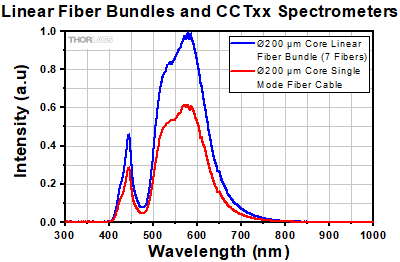
Click to Enlarge
Figure 2.6 Comparison of the spectra of an SLS201L broadband light source obtained with a CCT10 spectrometer when using the BFL200LS02 linear fiber bundle versus an FG200UCC single-fiber patch cable. The linear bundle provides a ~70% increase in maximum signal strength.
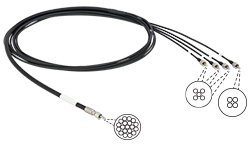
Click to Enlarge
Figure 31B Custom 1-to-4 Fan-Out Cable
Figure 31A Sample Fiber Bundle Connector Configurations
Custom Fiber Bundles
Thorlabs is pleased to offer custom straight and fan-out fiber bundles with random or mapped fiber configurations. Table 31D outlines some of our current bundle production capabilities. We are in the process of expanding these production capabilities, so do not hesitate to inquire if you do not see the bundle that you require described here.
Some custom bundles will require techniques outside of our usual production processes. As a result, we cannot guarantee that we will be able to make a bundle configuration to fit the requirements of your specific application. However, our engineers will be happy to work with you to determine if Thorlabs can produce a fiber bundle that fulfills your needs. To receive a quote, please provide a drawing or draft of your bundle configuration.
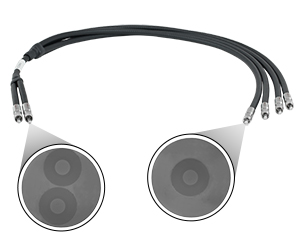
Click to Enlarge
Figure 31C Custom Silica Fiber Bundle with SMA905 Connectors
| Table 31D Custom Bundle Capabilities | |||
|---|---|---|---|
| Bundle Configuration |
Straighta | Fan Out (2 or More Legs)a,b | |
| Fiber Types |
Single Mode | Standard (320 to 2100 nm), Ultra-High NA (960 to 1600 nm), Photosensitive (980 to 1600 nm) |
|
| Multimode | 0.10 NA Step Index (280 to 750 nm), 0.22 NA Step Index (190 to 2500 nm), 0.39 NA Step Index (300 to 2200 nm), Multimode Graded Index (750 to 1450 nm), Multimode ZrF4 (285 nm to 4.5 µm) |
||
| Tubing Optionsc | Thorlabs' Stock Furcation Tubing, Stainless Steel Tubing or Black Heat Shrink Tubing | ||
| Connectors | SMA905 (Ø2 mm Max Cored), FC/PC (Ø800 µm Max Cored), Ø1/4" Probe, or Flat-Cleaved Unterminated Fiber |
||
| Length Tolerancee | ±0.14 m | ||
| Active Area Geometryf |
Round or Linear | ||
| Angle Polishing | On Special Request. Available for up to Ø105 µm Core on Single Fiber End. Please Inquire for More Information. |
||
Our cable engineers are available to help manufacture a bundle for your application.
Please contact techsales@thorlabs.com with your custom bundle requests.
Please provide a drawing or draft of your custom bundle to expedite quote processing.
| Quick Links |
|---|
| Damage at the Air / Glass Interface |
| Intrinsic Damage Threshold |
| Preparation and Handling of Optical Fibers |
Laser-Induced Damage in Silica Optical Fibers
The following tutorial details damage mechanisms relevant to unterminated (bare) fiber, terminated optical fiber, and other fiber components from laser light sources. These mechanisms include damage that occurs at the air / glass interface (when free-space coupling or when using connectors) and in the optical fiber itself. A fiber component, such as a bare fiber, patch cable, or fused coupler, may have multiple potential avenues for damage (e.g., connectors, fiber end faces, and the device itself). The maximum power that a fiber can handle will always be limited by the lowest limit of any of these damage mechanisms.
While the damage threshold can be estimated using scaling relations and general rules, absolute damage thresholds in optical fibers are very application dependent and user specific. Users can use this guide to estimate a safe power level that minimizes the risk of damage. Following all appropriate preparation and handling guidelines, users should be able to operate a fiber component up to the specified maximum power level; if no maximum is specified for a component, users should abide by the "practical safe level" described below for safe operation of the component. Factors that can reduce power handling and cause damage to a fiber component include, but are not limited to, misalignment during fiber coupling, contamination of the fiber end face, or imperfections in the fiber itself. For further discussion about an optical fiber’s power handling abilities for a specific application, please contact Thorlabs’ Tech Support.
Damage at the Air / Glass Interface
There are several potential damage mechanisms that can occur at the air / glass interface. Light is incident on this interface when free-space coupling or when two fibers are mated using optical connectors. High-intensity light can damage the end face leading to reduced power handling and permanent damage to the fiber. For fibers terminated with optical connectors where the connectors are fixed to the fiber ends using epoxy, the heat generated by high-intensity light can burn the epoxy and leave residues on the fiber facet directly in the beam path.
| Table 36C Estimated Optical Power Densities on Air / Glass Interfacea | ||
|---|---|---|
| Type | Theoretical Damage Thresholdb | Practical Safe Levelc |
| CW (Average Power) |
~1 MW/cm2 | ~250 kW/cm2 |
| 10 ns Pulsed (Peak Power) |
~5 GW/cm2 | ~1 GW/cm2 |
Damage Mechanisms on the Bare Fiber End Face
Damage mechanisms on a fiber end face can be modeled similarly to bulk optics, and industry-standard damage thresholds for UV Fused Silica substrates can be applied to silica-based fiber. However, unlike bulk optics, the relevant surface areas and beam diameters involved at the air / glass interface of an optical fiber are very small, particularly for coupling into single mode (SM) fiber. therefore, for a given power density, the power incident on the fiber needs to be lower for a smaller beam diameter.
Table 36C lists two thresholds for optical power densities: a theoretical damage threshold and a "practical safe level". In general, the theoretical damage threshold represents the estimated maximum power density that can be incident on the fiber end face without risking damage with very good fiber end face and coupling conditions. The "practical safe level" power density represents minimal risk of fiber damage. Operating a fiber or component beyond the practical safe level is possible, but users must follow the appropriate handling instructions and verify performance at low powers prior to use.
Calculating the Effective Area for Single Mode Fibers
The effective area for single mode (SM) fiber is defined by the mode field diameter (MFD), which is the cross-sectional area through which light propagates in the fiber; this area includes the fiber core and also a portion of the cladding. To achieve good efficiency when coupling into a single mode fiber, the diameter of the input beam must match the MFD of the fiber.
As an example, SM400 single mode fiber has a mode field diameter (MFD) of ~Ø3 µm operating at 400 nm, while the MFD for SMF-28 Ultra single mode fiber operating at 1550 nm is Ø10.5 µm. The effective area for these fibers can be calculated as follows:
SM400 Fiber: Area = Pi x (MFD/2)2 = Pi x (1.5 µm)2 = 7.07 µm2 = 7.07 x 10-8 cm2
SMF-28 Ultra Fiber: Area = Pi x (MFD/2)2 = Pi x (5.25 µm)2 = 86.6 µm2 = 8.66 x 10-7 cm2
To estimate the power level that a fiber facet can handle, the power density is multiplied by the effective area. Please note that this calculation assumes a uniform intensity profile, but most laser beams exhibit a Gaussian-like shape within single mode fiber, resulting in a higher power density at the center of the beam compared to the edges. Therefore, these calculations will slightly overestimate the power corresponding to the damage threshold or the practical safe level. Using the estimated power densities assuming a CW light source, we can determine the corresponding power levels as:
SM400 Fiber: 7.07 x 10-8 cm2 x 1 MW/cm2 = 7.1 x 10-8 MW = 71 mW (Theoretical Damage Threshold)
7.07 x 10-8 cm2 x 250 kW/cm2 = 1.8 x 10-5 kW = 18 mW (Practical Safe Level)
SMF-28 Ultra Fiber: 8.66 x 10-7 cm2 x 1 MW/cm2 = 8.7 x 10-7 MW = 870 mW (Theoretical Damage Threshold)
8.66 x 10-7 cm2 x 250 kW/cm2 = 2.1 x 10-4 kW = 210 mW (Practical Safe Level)
Effective Area of Multimode Fibers
The effective area of a multimode (MM) fiber is defined by the core diameter, which is typically far larger than the MFD of an SM fiber. For optimal coupling, Thorlabs recommends focusing a beam to a spot roughly 70 - 80% of the core diameter. The larger effective area of MM fibers lowers the power density on the fiber end face, allowing higher optical powers (typically on the order of kilowatts) to be coupled into multimode fiber without damage.
Damage Mechanisms Related to Ferrule / Connector Termination
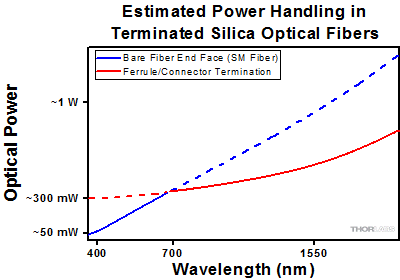 Click to Enlarge
Click to EnlargeFigure 36D Plot showing approximate input power that can be incident on a single mode silica optical fiber with a termination. Each line shows the estimated power level due to a specific damage mechanism. The maximum power handling is limited by the lowest power level from all relevant damage mechanisms (indicated by a solid line).
Fibers terminated with optical connectors have additional power handling considerations. Fiber is typically terminated using epoxy to bond the fiber to a ceramic or steel ferrule. When light is coupled into the fiber through a connector, light that does not enter the core and propagate down the fiber is scattered into the outer layers of the fiber, into the ferrule, and the epoxy used to hold the fiber in the ferrule. If the light is intense enough, it can burn the epoxy, causing it to vaporize and deposit a residue on the face of the connector. This results in localized absorption sites on the fiber end face that reduce coupling efficiency and increase scattering, causing further damage.
For several reasons, epoxy-related damage is dependent on the wavelength. In general, light scatters more strongly at short wavelengths than at longer wavelengths. Misalignment when coupling is also more likely due to the small MFD of short-wavelength SM fiber that also produces more scattered light.
To minimize the risk of burning the epoxy, fiber connectors can be constructed to have an epoxy-free air gap between the optical fiber and ferrule near the fiber end face. Our high-power multimode fiber patch cables use connectors with this design feature.
Determining Power Handling with Multiple Damage Mechanisms
When fiber cables or components have multiple avenues for damage (e.g., fiber patch cables), the maximum power handling is always limited by the lowest damage threshold that is relevant to the fiber component. In general, this represents the highest input power that can be incident on the patch cable end face and not the coupled output power.
As an illustrative example, Figure 36D shows an estimate of the power handling limitations of a single mode fiber patch cable due to damage to the fiber end face and damage via an optical connector. The total input power handling of a terminated fiber at a given wavelength is limited by the lower of the two limitations at any given wavelength (indicated by the solid lines). A single mode fiber operating at around 488 nm is primarily limited by damage to the fiber end face (blue solid line), but fibers operating at 1550 nm are limited by damage to the optical connector (red solid line).
In the case of a multimode fiber, the effective mode area is defined by the core diameter, which is larger than the effective mode area for SM fiber. This results in a lower power density on the fiber end face and allows higher optical powers (on the order of kilowatts) to be coupled into the fiber without damage (not shown in graph). However, the damage limit of the ferrule / connector termination remains unchanged and as a result, the maximum power handling for a multimode fiber is limited by the ferrule and connector termination.
Please note that these are rough estimates of power levels where damage is very unlikely with proper handling and alignment procedures. It is worth noting that optical fibers are frequently used at power levels above those described here. However, these applications typically require expert users and testing at lower powers first to minimize risk of damage. Even still, optical fiber components should be considered a consumable lab supply if used at high power levels.
Intrinsic Damage Threshold
In addition to damage mechanisms at the air / glass interface, optical fibers also display power handling limitations due to damage mechanisms within the optical fiber itself. These limitations will affect all fiber components as they are intrinsic to the fiber itself. Two categories of damage within the fiber are damage from bend losses and damage from photodarkening.
Bend Losses
Bend losses occur when a fiber is bent to a point where light traveling in the core is incident on the core/cladding interface at an angle higher than the critical angle, making total internal reflection impossible. Under these circumstances, light escapes the fiber, often in a localized area. The light escaping the fiber typically has a high power density, which burns the fiber coating as well as any surrounding furcation tubing.
A special category of optical fiber, called double-clad fiber, can reduce the risk of bend-loss damage by allowing the fiber’s cladding (2nd layer) to also function as a waveguide in addition to the core. By making the critical angle of the cladding/coating interface higher than the critical angle of the core/clad interface, light that escapes the core is loosely confined within the cladding. It will then leak out over a distance of centimeters or meters instead of at one localized spot within the fiber, minimizing the risk of damage. Thorlabs manufactures and sells 0.22 NA double-clad multimode fiber, which boasts very high, megawatt range power handling.
Photodarkening
A second damage mechanism, called photodarkening or solarization, can occur in fibers used with ultraviolet or short-wavelength visible light, particularly those with germanium-doped cores. Fibers used at these wavelengths will experience increased attenuation over time. The mechanism that causes photodarkening is largely unknown, but several fiber designs have been developed to mitigate it. For example, fibers with a very low hydroxyl ion (OH) content have been found to resist photodarkening and using other dopants, such as fluorine, can also reduce photodarkening.
Even with the above strategies in place, all fibers eventually experience photodarkening when used with UV or short-wavelength light, and thus, fibers used at these wavelengths should be considered consumables.
Preparation and Handling of Optical Fibers
General Cleaning and Operation Guidelines
These general cleaning and operation guidelines are recommended for all fiber optic products. Users should still follow specific guidelines for an individual product as outlined in the support documentation or manual. Damage threshold calculations only apply when all appropriate cleaning and handling procedures are followed.
-
All light sources should be turned off prior to installing or integrating optical fibers (terminated or bare). This ensures that focused beams of light are not incident on fragile parts of the connector or fiber, which can possibly cause damage.
-
The power-handling capability of an optical fiber is directly linked to the quality of the fiber/connector end face. Always inspect the fiber end prior to connecting the fiber to an optical system. The fiber end face should be clean and clear of dirt and other contaminants that can cause scattering of coupled light. Bare fiber should be cleaved prior to use and users should inspect the fiber end to ensure a good quality cleave is achieved.
-
If an optical fiber is to be spliced into the optical system, users should first verify that the splice is of good quality at a low optical power prior to high-power use. Poor splice quality may increase light scattering at the splice interface, which can be a source of fiber damage.
-
Users should use low power when aligning the system and optimizing coupling; this minimizes exposure of other parts of the fiber (other than the core) to light. Damage from scattered light can occur if a high power beam is focused on the cladding, coating, or connector.
Tips for Using Fiber at Higher Optical Power
Optical fibers and fiber components should generally be operated within safe power level limits, but under ideal conditions (very good optical alignment and very clean optical end faces), the power handling of a fiber component may be increased. Users must verify the performance and stability of a fiber component within their system prior to increasing input or output power and follow all necessary safety and operation instructions. The tips below are useful suggestions when considering increasing optical power in an optical fiber or component.
-
Splicing a fiber component into a system using a fiber splicer can increase power handling as it minimizes possibility of air/fiber interface damage. Users should follow all appropriate guidelines to prepare and make a high-quality fiber splice. Poor splices can lead to scattering or regions of highly localized heat at the splice interface that can damage the fiber.
-
After connecting the fiber or component, the system should be tested and aligned using a light source at low power. The system power can be ramped up slowly to the desired output power while periodically verifying all components are properly aligned and that coupling efficiency is not changing with respect to optical launch power.
-
Bend losses that result from sharply bending a fiber can cause light to leak from the fiber in the stressed area. When operating at high power, the localized heating that can occur when a large amount of light escapes a small localized area (the stressed region) can damage the fiber. Avoid disturbing or accidently bending fibers during operation to minimize bend losses.
-
Users should always choose the appropriate optical fiber for a given application. For example, large-mode-area fibers are a good alternative to standard single mode fibers in high-power applications as they provide good beam quality with a larger MFD, decreasing the power density on the air/fiber interface.
-
Step-index silica single mode fibers are normally not used for ultraviolet light or high-peak-power pulsed applications due to the high spatial power densities associated with these applications.
| Posted Comments: | |
Damien ABLATOM
(posted 2025-10-16 07:32:53.57) Hello,
Is it possible to provide a BFL104HS ... with a personalized length like 50 cm or another length ?
Thank you for your answer,
D. Devismes EGies
(posted 2025-10-20 03:49:09.0) Thank you for contacting Thorlabs. Our custom capabilities for our fiber bundles can be found in the “Custom Bundles” tab here: https://www.thorlabs.com/newgrouppage9.cfm?objectgroup_id=7719&tabname=custombundles. I have reached out to you directly regarding your particular application. William Gilbraith
(posted 2023-11-07 12:56:40.103) I was wondering if you could make a 7 fiber, round to linear bundle that is over 2m in length, and if you can, what the maximum possible length you could make was. We are looking to run a 7 fiber, round to linear bundle approximately 5m wanted to avoid the light loss of coupling a single core fiber to the bundled fiber to image onto the slit of our spectrometer.
Thanks cdolbashian
(posted 2023-11-14 05:22:15.0) Thank you for reaching out to us with this inquiry! We can potentially do such a custom. I have reached out to you directly to discuss this particular configuration. In the future, please feel free to reach out to our custom team directly at Techsales@thorlabs.com. Clancy Lin
(posted 2022-12-08 15:21:16.63) Want to know the fiber Index of Refraction (n), thanks. jgreschler
(posted 2022-12-08 10:20:48.0) Thank you for reaching out to Thorlabs. Unfortunately, the indices of both the fiber bundles listed on this webpage are proprietary. Pattabhi Dyta
(posted 2022-07-24 01:29:02.48) BFL200LS02 - This low OH round to linear patch cable has a length of 2 meter. Do you have really short length? like 20 mm-50mm This is for use of attaching optics close to the spectrometer without too much fiber length. Require customization for 2 units. Please let me know. jgreschler
(posted 2022-07-26 09:31:34.0) Thank you for reaching out to Thorlabs. You can request custom lengths of any fiber patch cable or bundle by emailing techsupport@thorlabs.com. In this case 20-50mm falls outside our workable range, I have emailed you directly to discuss minimum possible lengths. Will Derdeyn
(posted 2022-03-21 11:31:40.843) Hello,
I would like to pass the round-to-linear fiber bundle into a glovebox. If I seal around the metal sheath, will that provide a gas-tight seal? In other words, does the metal sheath provide a good seal on the layers inside of it?
Thanks and looking forward to hearing back,
Will jgreschler
(posted 2022-03-25 03:50:33.0) Thank you for reaching out to Thorlabs. The bundle in question, BFL200LS02, is not hermetically sealed and we don't recommend it for this application. We do have the ability to fabricate selective fiber/jacketing, you can reference this product page for more informationhttps://www.thorlabs.us/newgrouppage9.cfm?objectgroup_id=7840&pn=MFV1L1. I have reached out to you directly to discuss your application further. Anuj Rekhy
(posted 2020-08-18 12:30:06.47) Hi I was wondering if you guys can custom build this but with a FC/PC connector at the ends?? YLohia
(posted 2020-08-18 02:06:57.0) Thank you for contacting Thorlabs. Custom bundles can be requested by emailing techsupport@thorlabs.com. Unfortunately, we cannot offer the BFL105HS02 with FC/PC connectors as we currently do not have the capability of offering FC/PC bundles with more than two fibers. Michael Wakileh
(posted 2020-06-17 12:21:02.783) Hi,
can a Round-to-Linear Fiber Optic Bundles such as the BFL200LS02 be supplied at shorter lengths (such as 0.5 meters)?
If so, what would be the quote for single units?
best regards,
M. Wakileh nbayconich
(posted 2020-06-17 03:30:29.0) Thank you for contacting Thorlabs. We can provide these bundles in shorter lengths, I will reach out to you directly with more information about our custom capabilities. user
(posted 2019-06-15 13:23:41.383) These bundles could be made better. The central core at the round end is not the central core at the straight end (in mine at least), which increases the sensitivity to rotation when inserting a spot smaller than 500um to the round end. Also, the engraved line is not perfectly aligned with the cores. YLohia
(posted 2019-06-17 10:11:42.0) Hello, thank you for your feedback. Please note that the fibers are not mapped between the two connector ends and are specified as such. We understand that this is not the most ideal configuration and have taken your feedback into consideration for future product improvements. tillsten
(posted 2019-01-16 09:33:44.157) Is it possible to get the fiber without the steel tubing or wrap the steel tubing with something? For reason of Laser Protection the Steel tubing is awfully dangerous. nbayconich
(posted 2019-01-17 08:20:51.0) Thank you for contacting Thorlabs. We can provide our fiber bundles with the FT061PS stainless steel tubing with a black plastic sheath to reduce the amount of reflection. I will reach out to you directly to discuss our custom capabilities. t.4645.m
(posted 2018-09-03 15:02:15.34) 円形状線形状変換ファイバーバンドルの400~2400nmの波長に対する強度のグラフはございますか。あるようでしたら送っていただくと助かります。よろしくお願いします。 mmcclure
(posted 2018-09-05 08:11:03.0) これらに使われている光ファイバは、FG105UCA/FG105LCA/FG200UEA/FG200LEAです。これらの光ファイバの減衰特性は、下記ページの“概要”にグラフがございますので、ご参照ください。ご不明な点がございましたら、sales@thorlabs.jpまでお問い合わせください。 sepinzonm
(posted 2017-11-18 14:23:05.58) Hi, I bought one of your spectrometers, and I plan to use it with a fiber bundle, but I can't figure out which one I should use. In the "Linear-to-Linear Fiber Optic Bundles" webpage it mentions that it is more suitable for applications that require an entrance slit, such as absorption spectroscopy. But I can't figure out whether this round-to-linear bundle is better to use in specific applications, or in every other setup that doesn't require an entrance slit. Can you help me figure out, please? nbayconich
(posted 2017-12-26 04:43:31.0) Thank you for contacting Thorlabs. Performance will be similar using either linear to linear or round to linear depending on the light source. If the light source has an elliptical shape such as a cuvette or lamp then the linear input pattern can achieve a better coupling efficiency than using a round fiber bundle input such as the round-to-linear bundles. I will reach out to you directly to discuss your application. mikael.malmstrom
(posted 2016-09-02 06:49:27.017) Could the Ø200 µm or preferably the Ø105 µm version fiber-bundle be used to transmit high power YAG pulses? 100-500 mJ 8ns at 20 Hz and 1064 nm? tfrisch
(posted 2016-09-06 07:25:31.0) Hello, thank you for contacting Thorlabs. I have a few questions about your application. Typically, the coupling efficiency for a coherent source would be best with a single core fiber rather than a bundle. I will reach out to you directly about the details of your application. ehenning
(posted 2015-11-19 19:08:54.883) Can this fiber bundle be fabricated with the solarization-resistant fiber (e.g. FG200AEA)? We want to resurrect an old device with deuterium-tungsten light source. Thank you in advance. besembeson
(posted 2015-11-20 01:44:10.0) Response from Bweh at Thorlabs USA: Yes this can. We do such custom bundles. I will follow-up with you regarding a quotation. |

| Item # | Solarization Resistant |
Hydroxyl Content |
Wavelength Range |
Fiber Item # |
# of Fibers |
Linear End Fiber Dimensions |
Round End Effective Core |
Fiber Core Diameter |
Fiber Cladding Diameter |
NA | Minimum Bend Radius | |
|---|---|---|---|---|---|---|---|---|---|---|---|---|
| Short Termb | Long Termc | |||||||||||
| BFL105RS2 | Yes | - | 180 - 1200 nm | FG105ACA | 7 | 0.9 mm x 0.1 mm | Ø400 µm | 105 +1/-3 µm |
125 +1/-2 µm |
0.22 ± 0.02d | 16 mm | 32 mm |
| BFL105HS02 | Noa | High OH | 250 - 1200 nm | FG105UCA | 0.90 mm x 0.13 mm | Ø380 µm | 19 mm | |||||
| BFL105LS02 | No | Low OH | 400 - 2400 nm | FG105LCA | ||||||||

| Item # | Solarization Resistant |
Hydroxyl Content |
Wavelength Range |
Fiber Item # |
# of Fibers |
Linear End Fiber Dimensions |
Round End Effective Core |
Fiber Core Diameter |
Fiber Cladding Diameter |
NA | Minimum Bend Radius | |
|---|---|---|---|---|---|---|---|---|---|---|---|---|
| Short Termb | Long Termb | |||||||||||
| BFL200RS2 | Yes | - | 180 - 1200 nm | FG200AEA | 7 | 1.6 mm x 0.2 mm | Ø700 µm | 200 ± 4 µm | 220 ± 2 µm | 0.22 ± 0.02c | 23 mm | 46 mm |
| BFL200HS02 | Noa | High OH | 250 - 1200 nm | FG200UEA | 1.55 mm x 0.23 mm | Ø670 µm | ||||||
| BFL200LS02 | No | Low OH | 400 - 2400 nm | FG200LEA | ||||||||
 Products Home
Products Home











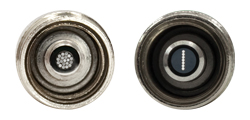
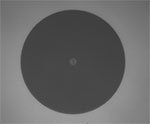
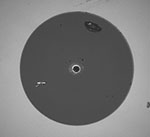
 Round-to-Linear Fiber Bundles
Round-to-Linear Fiber Bundles